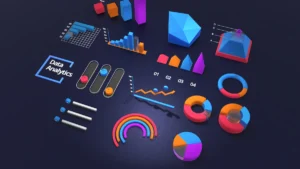You’re a freelance developer who accepted Bitcoin for a project last year. Now tax season looms, and you’re staring at transaction histories across five exchanges, two wallets, and several DeFi platforms. How do you turn this chaos into something the IRS understands? The answer lies in database architecture—the invisible backbone determining whether crypto tax reporting becomes a nightmare or a manageable process.
Why Your Database Choice Matters More Than You Think
Crypto tax reporting isn’t just about numbers; it’s about connecting dots across fragmented data sources. Transactions involve dates, amounts, wallet addresses, exchange rates, and complex events like staking rewards or NFT sales. A well-structured database:
- Tracks cost basis accurately across thousands of transactions
- Handles real-time price fluctuations
- Adapts to new regulations (like the IRS Form 8949 requirements)
- Scales as your portfolio grows
Common Architectural Approaches
1. Relational Databases (SQL)
Sponsored
Examples: PostgreSQL, MySQL
Perfect for entrepreneurs who prioritize precision. SQL databases use structured tables to link transactions, wallets, and tax events.
Pros:
– ACID compliance ensures data integrity (no lost transactions!)
– Complex queries (e.g., “Show all ETH gains between January–March”) run efficiently
– Mature tools for backups and security
Cons:
– Rigid schema requires upfront planning
– Struggles with unstructured data like blockchain metadata
2. Document Databases (NoSQL)
Examples: MongoDB, Couchbase
Ideal for freelancers with diverse crypto activities. Stores data in flexible JSON-like documents.
Pros:
– Handles irregular data (e.g., unique NFT attributes) effortlessly
– Horizontal scaling for massive datasets
– Faster prototyping—no need to predefine all fields
Cons:
– Limited join operations complicate cross-referencing
– May require additional scripting for tax calculations
3. Hybrid Approaches
Many solutions combine SQL for core transactions with NoSQL for raw blockchain logs. A crypto tax SaaS platform might:
– Use PostgreSQL for user portfolios and tax forms
– Store blockchain data in Elasticsearch for quick searches
– Employ Redis for real-time price caching
Practical Considerations for Beginners
-
Start Simple, Then Scale
Freelancers: Begin with spreadsheet imports into tools like Koinly or CryptoTrader.Tax. As volume grows, explore databases.
Entrepreneurs: Build modular architectures early—separate user data from transaction logs. -
Focus on Audit Trails
Implement immutable logging. Every adjustment to cost basis or transaction classification should leave a trace. -
Automate Exchange Rate Lookups
Integrate APIs like CoinGecko to auto-populate fiat values at transaction timestamps. -
Plan for Regulatory Shifts
Store raw transaction data separately from processed tax labels. New rules might require reprocessing historical data.
“Tax complexity scales exponentially with crypto adoption. Your database isn’t just storage—it’s your first line of defense against compliance headaches.”
— Sarah, crypto CPA at ChainLedger Advisory
The Human Factor
Even with robust tech, remember:
– Data hygiene trumps fancy tools. Regularly reconcile exchanges with wallet balances.
– Metadata matters. Tag transactions (“client payment,” “mining income”) during entry.
– Seek symmetry. Your database should mirror real-world events. A crypto swap isn’t one transaction—it’s a sale and a purchase.
Choosing a database architecture is less about technical dogma and more about aligning with your workflow. A freelance graphic designer trading memecoins occasionally needs different infrastructure than a blockchain startup processing 10,000 transactions daily. By understanding these frameworks, you transform tax reporting from a frantic scramble into a structured, even insightful, business process.
After all, in crypto’s wild landscape, your database is the compass that keeps you oriented. Build it thoughtfully, and it’ll reward you with clarity when you need it most.



